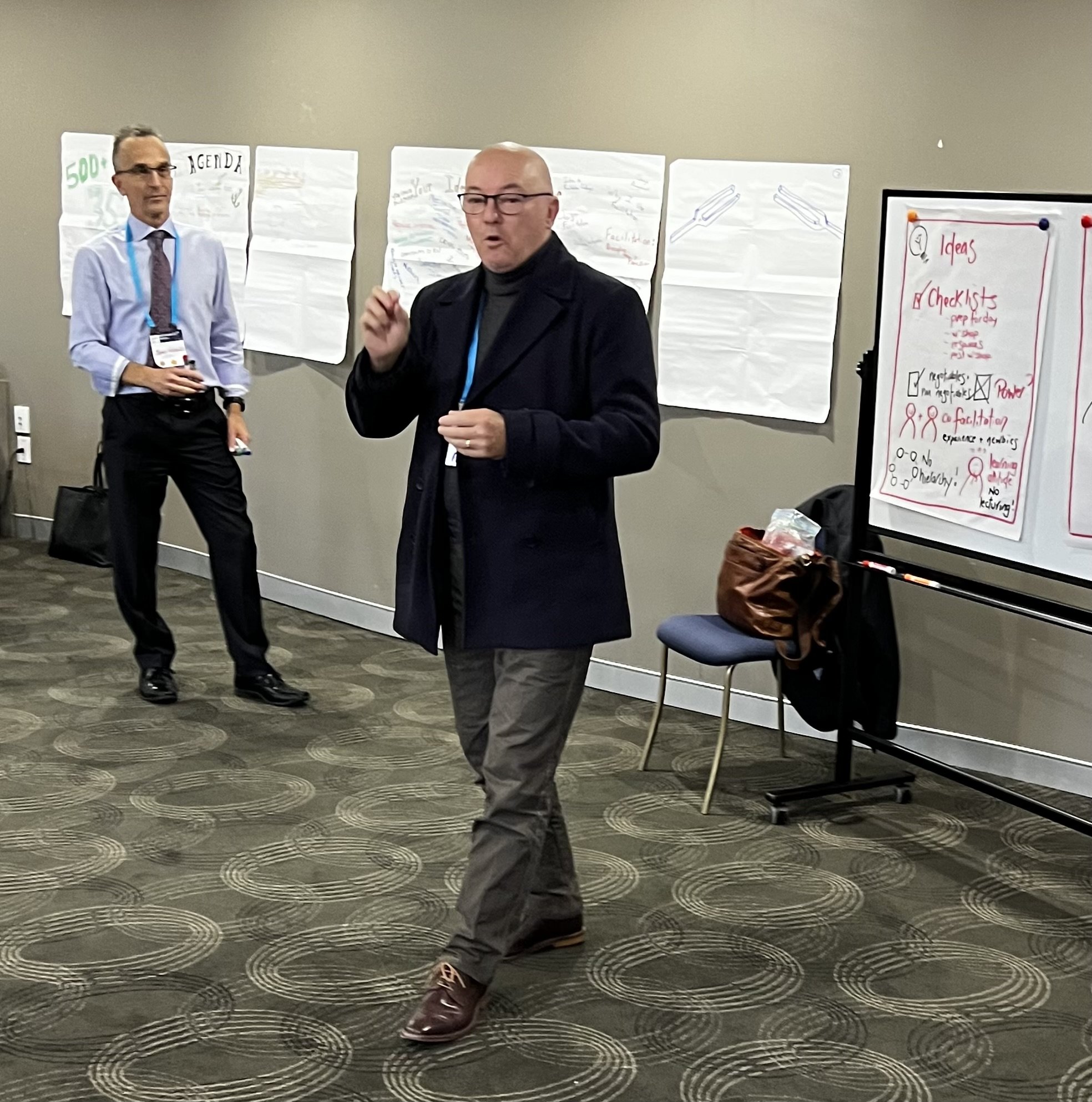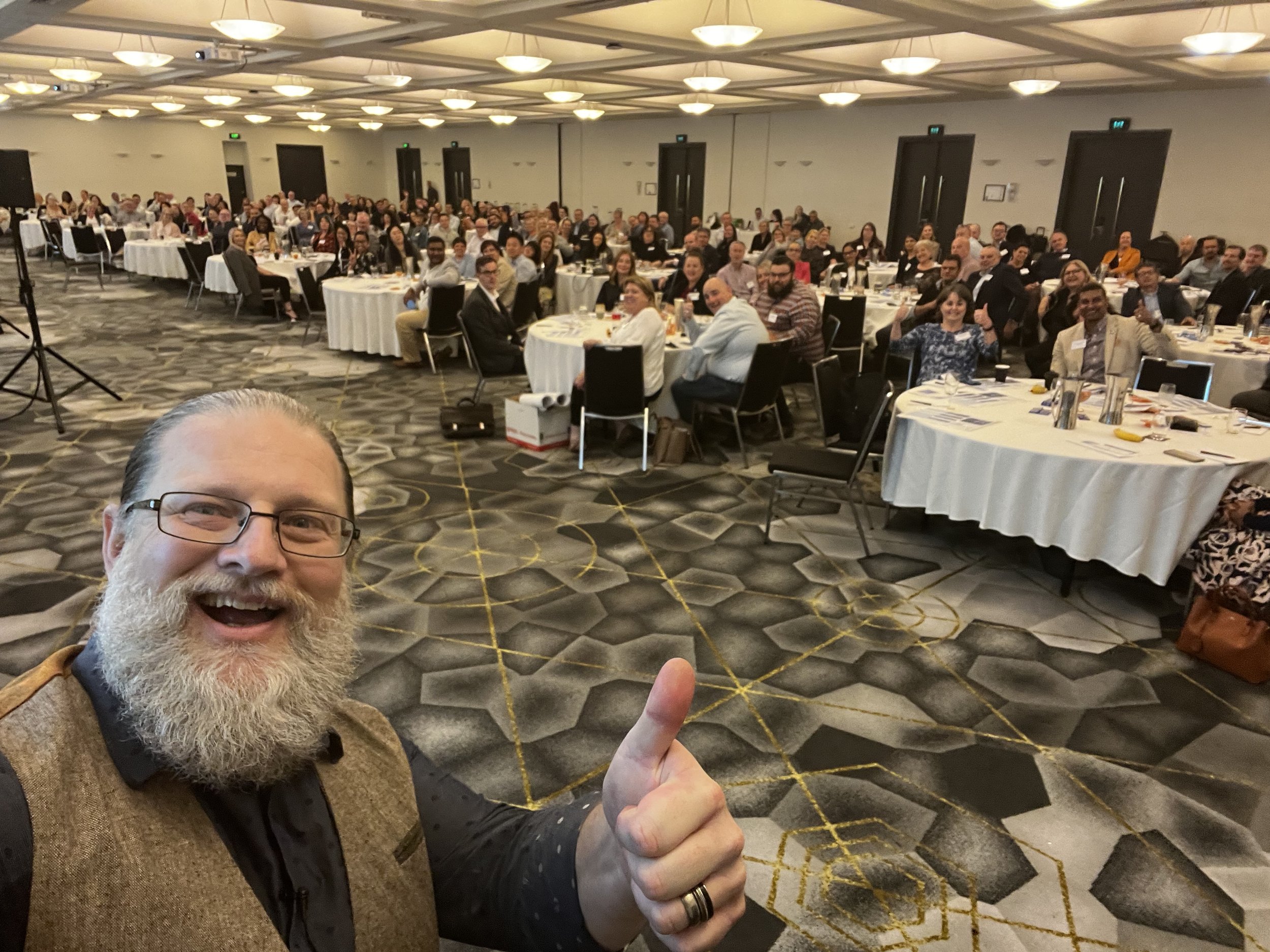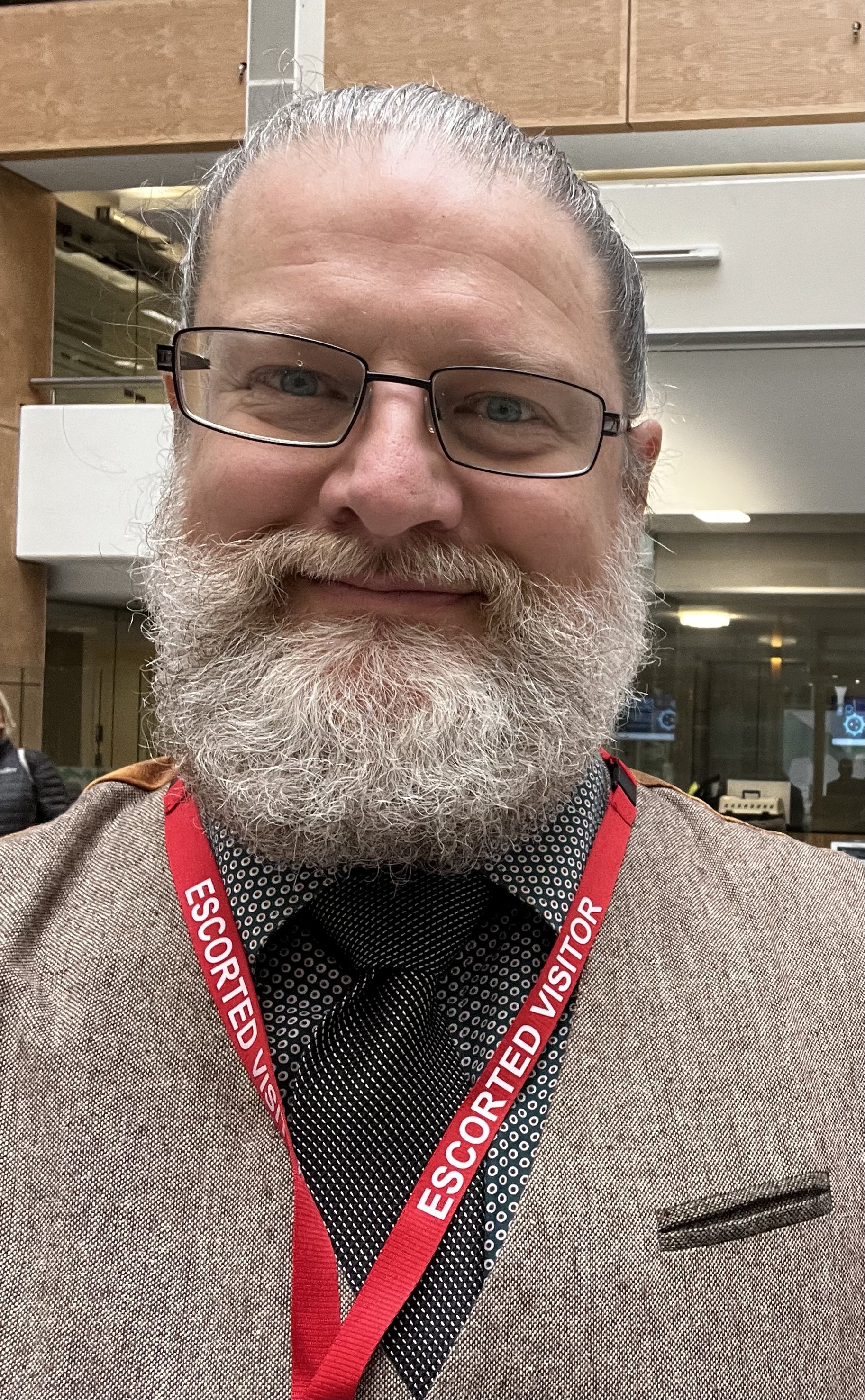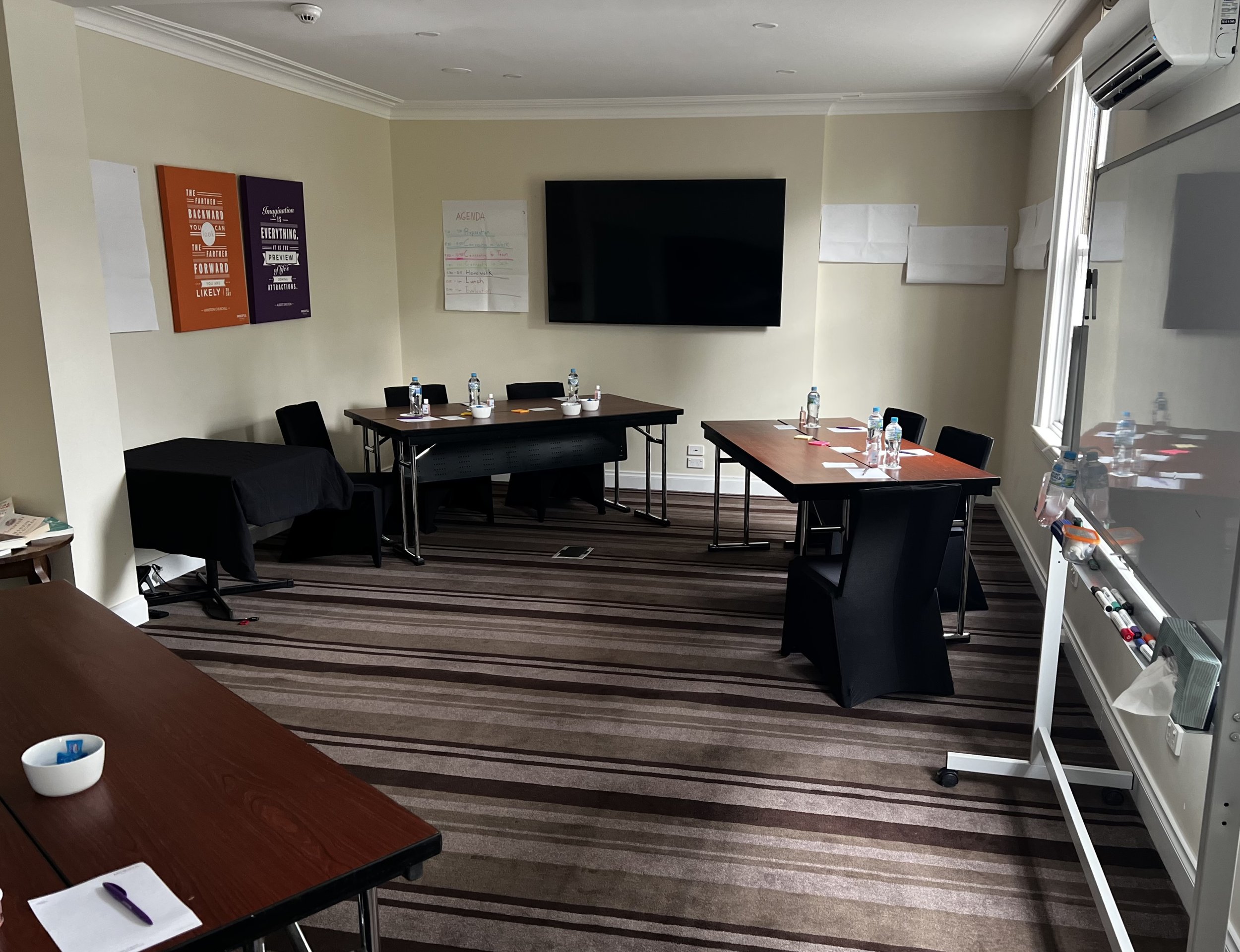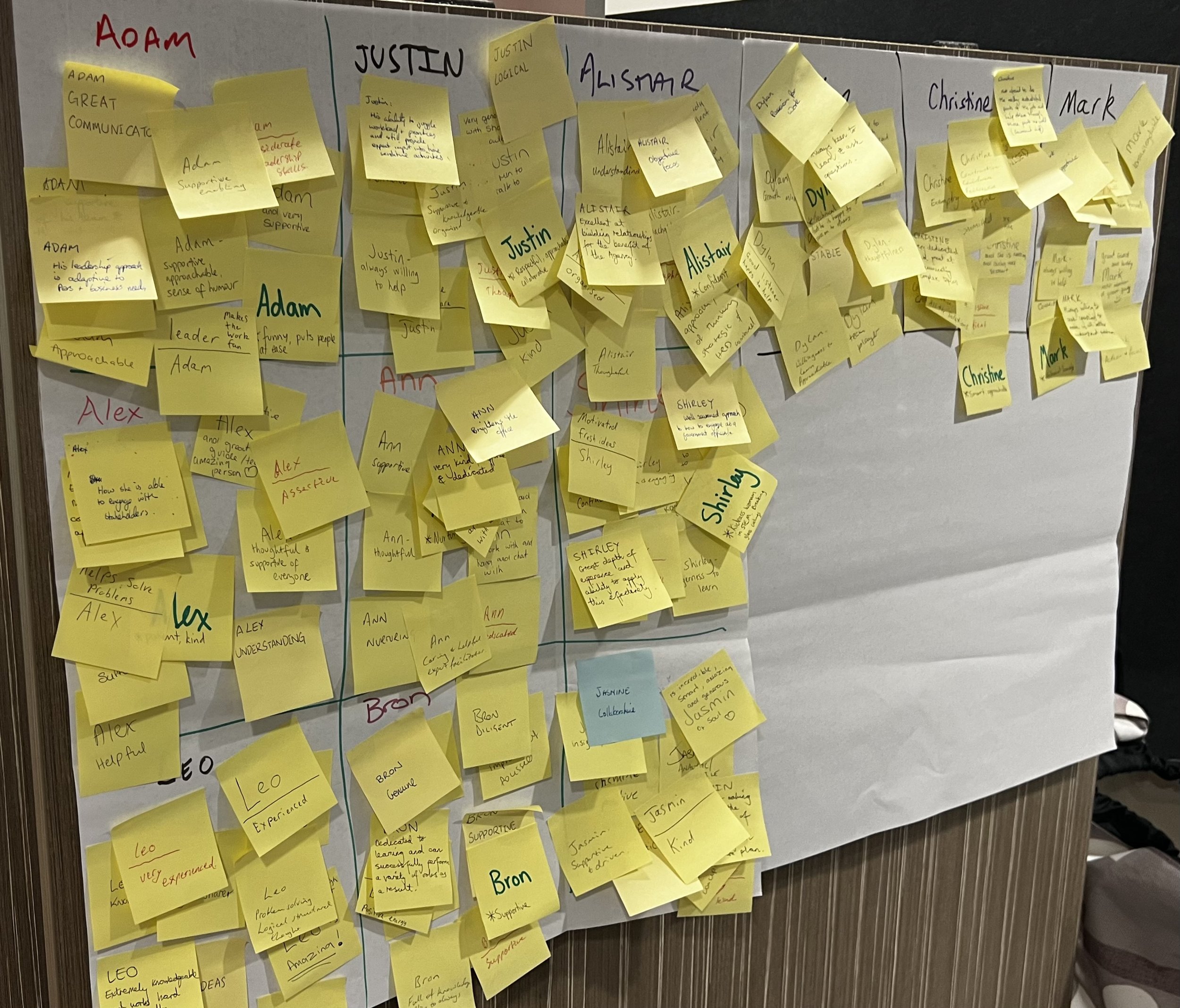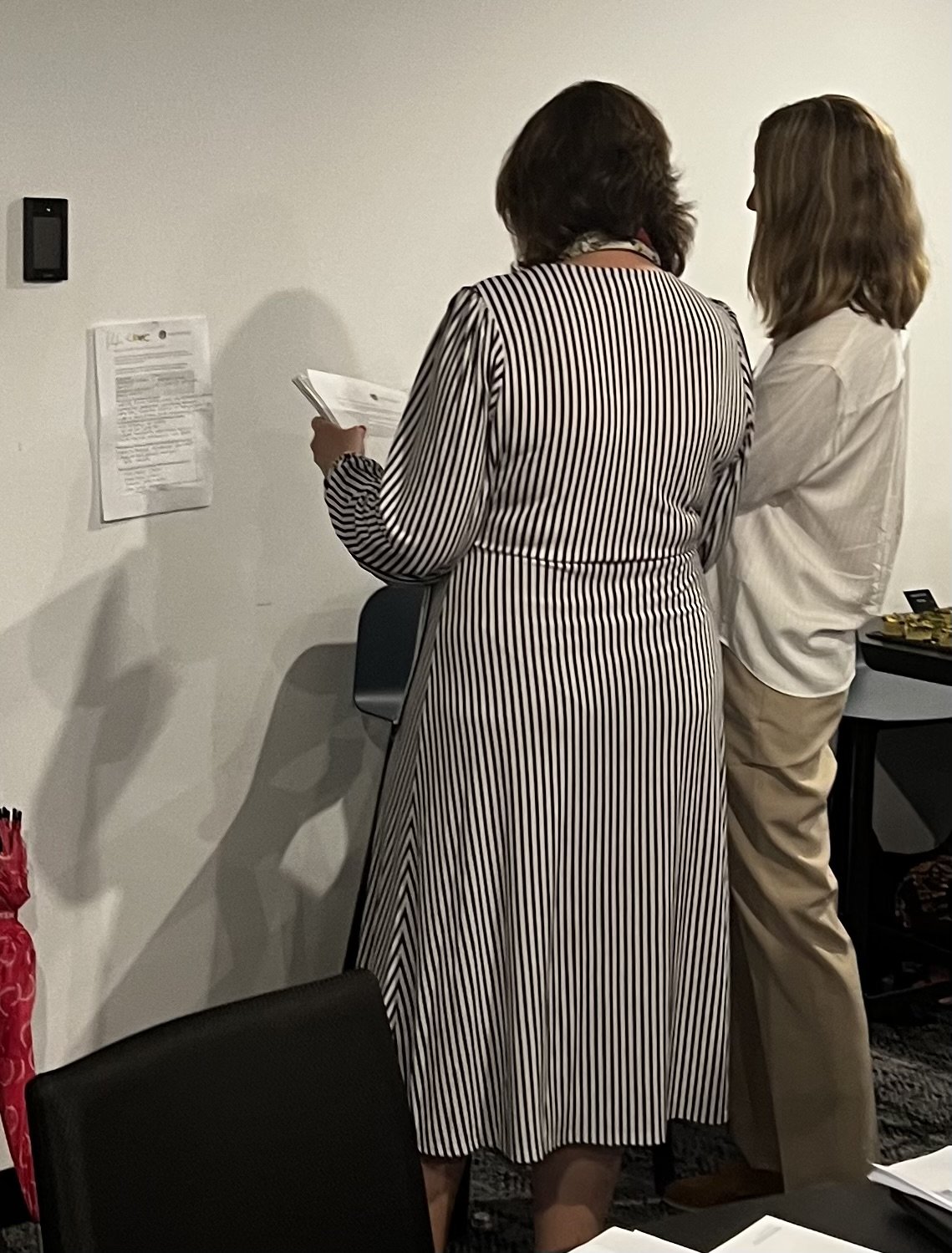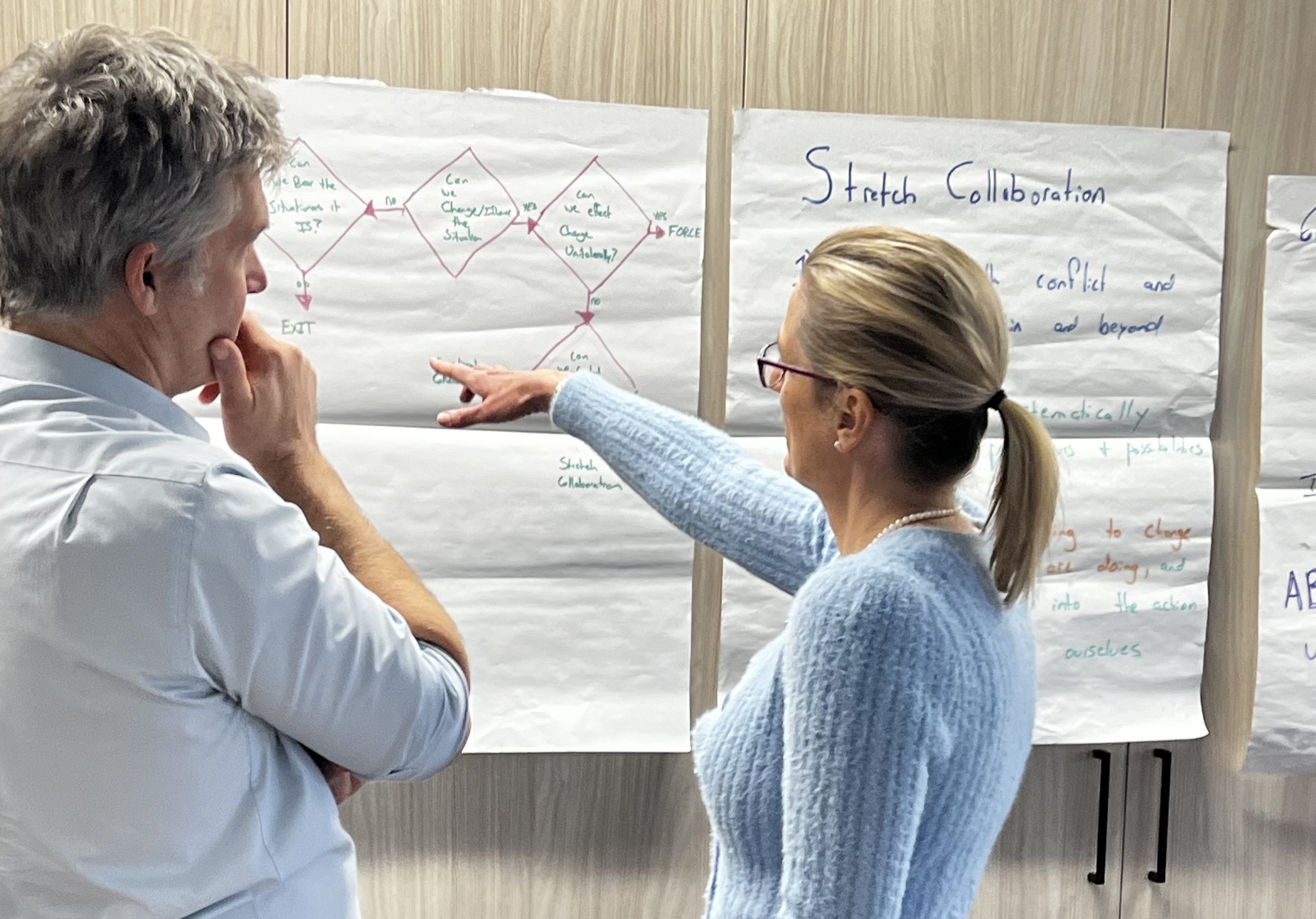How to advocate for good facilitation
Within any profession there are a whole realm of skills and tools that not only are unique to the profession, but unless practiced, are very difficult to do.
Yet, haven’t you watched a performance, and heard somebody critique it afterward, saying things such as, ‘I don’t know why they did it that way?’
Or watched a sporting event, and heard someone exclaim, ‘Why didn’t they just pass the ball?!’.
Or, if you are a subject matter expert, have you heard one of your clients recommend you do something that just either technically isn’t possible, or isn’t possible within the current constraints?
I bet you didn’t have to look too far to find examples, did you?
‘The shoulders of giants…’
Nick Housego PSM, founder of the Government Facilitation Community of Practice, and
Jamie Nicholls CPF, Current Co-Chair of the GFCoP at
the International Association of Facilitators Oceana Conference 2023
(at a session Jamie and I ran on the GFCoP )
There are skills in setting up, designing, and facilitating events, be they process driven events (such as planning days, consultations, etc), or learning driven events.
If you are a facilitator, you invariably have used a variety of skills and tools to help your participants meet the objectives of the day… and, you know that if you practice using these skills, and tools, the facilitated events that you run will continually improve.
‘…our insights…’
A process driven facilitated event, and
the writing down of insights from 1 of many tables at that event
What is important to realise, however, is that many, who are not professional facilitators themselves, may not understand just what goes into a quality facilitated outcome. They may even experience a wonderful outcome from the workshop that you deliver, yet do not understand why it was a success.
And regardless of your wishes that they were able to see and understand what it took for you to deliver the successful result, how could they be expected to? Some of what you do is in the ‘facilitator’s toolkit’, and unless practiced are outside of the knowledge of others. Other elements of what creates a great facilitation are what I consider ‘the shibboleths of mastery’ - those deeper insights that only arise after many, many facilitations the skill in which can only be known by those that have experience with them, theirselves.
‘Collaboration small or large’
Facilitating a larger learning driven facilitation to a group of hundreds
This post is intended to help, to provide a little guidance on how, as a faclitator, you can work to help educate your clients, and how you can build support for some of the things that will help you deliver even more effective facilitated events.
Having facilitated hundreds of workshops, across public, private and not-for-profit sectors, I strongly believe that part of your role as a facilitator is to help advocate for the profession, and what it takes for the profession to thrive.
‘…the briefing…’
While briefings can be done over phone or video call, I try to arrange face-to-face meetings
My advocacy for facilitation and facilitators can best be seen when I am in the ‘briefing’ and the ‘proposal’ stages of working with a facilitation client.
When advocating, it is important to be able to offer reasons (evidence base) for those things that you are suggesting.
Regardless if the facilitated event is a process driven facilitation or a learning driven facilitation, in order for participants to be able to contribute their genuine insights, they need to feel engaged, and trust that their vulnerability in offering insights will be respected.
As facilitators, we know that people feel more engaged and connected with outcomes if they’ve participated in the development of them. We also know that in order to develop something, requires activities such as writing, comparing ideas, listening to others, (sometimes building the skills required to listen to others), and collaborating…. interactively.
Regardless if the group is large or small, collaboration is facilitated by discussions amongst and between participants. Participants need to move, to combine, disband, and recombine to gather different ideas from others across the workshop.
‘…small tables of three…’
A small room, which was set up as a board room, but rearranged to facilitate interactivity
Like everything, form should follow function. (I did a post specifically on this, which can be found here). When you are setting up the room, determine what activities (functions) you are hoping will take place at the table. Do you want the participants to largely be passive recipients of information, perhaps with a brief question and answer session? If so, you might set the room up theatre style.
Do you want minimal interaction and collaboration, but primarily just wanting to see faces and have your participant receive information and vote? Then you may choose to set the room up with a large board room style table.
However, if you are hoping for interaction between participants, if you are hoping to have them collaborate together… if you are wanting them to design processes, uncover risks, opportunities, and discover how to resolve conflicts, then the form of the room should follow this function you are hoping to achieve. Ideally small tables, cafe style seating, would be most appropriate.
I’ve found that ideal table size for small group discussions range from groups of 3-7 participants at a table. More than this, the table breaks into separate groups. Smaller than this, and the participants are then in paired discussion - which is less likely to produce the critical mass for innovation - but can be more appropriate for content that requires an earnest and vulnerable sharing of their unique perspectives.
If, you do want tables to work together to capture their unique insights, they will also need to be able to see the fruits of their labour.
‘…my hopes for the day…’
An interactive individual objective activity to build engagement
‘…we are valued…’
A strengths based activity designed to build collaborative spirit
‘…around the world…’
World Cafe activity - a great way to help a group re-enter the room after lunch,
and share with another participant what resonated with them from what others produced
‘…insights shared, benefit us all…’
World Cafe activity,
participants contemplating how they can implement what they’ve learned
To build a sense of connection, cohesiveness, and lasting bonds, a workshop requires activities that can move participants around. A larger room, with wall space, in addition to the small tables (of 3-7 participants ideally) greatly assists the achievement of any interactive workshop’s objectives.
Participants sometimes benefit from being able to see the achieved outputs that they’ve produced during the workshop. This helps to build further innovation, and inspire new ideas. It can also be very useful for participants to review the resources (graphs, frameworks, etc) in order to apply them in the workshop, as well as to talk with each other on how they can implement these ideas back in the ‘real world’ of work outside of the workshop. if you are helping teach the micro-skills of collaboration, these will need to be practiced within the workshop, and building the participant’s confidence in these is easier when they can see the framework, and referencing from whence it came.
‘…captured insights to share…’
A graphic recording of an Insightful Path workshop
Illustrated by Paul Telling, Founder and Lead Visual Storyteller
The Visual Storytellers Group
International Association of Facilitators, Oceania Conference
held in Canberra in 2023
In addition to the work that the participants themselves produce, facilitators sometimes work with a graphic recording artist, to help illustrate the workshop and the ideas discussed for the benefit of the group.
Whole of group workshops which have, as their primary purpose, a desire to build engagement and cohesiveness will undoubtedly benefit from these an other useful tools. When sponsored by the Delegate who is approving the facilitation, this can result in a sense from the participants that their Delegate or Leader is one who not only cares about achieving results, but also is one who cares for their team along the way.
When Leaders can ‘leave their pay scale at the door’, and participate as equal participants (including Senior Leadership), this message of valuing the insights of the group is even stronger.
Part of the process of advocating for the facilitation is to help the Delgate understand that by creating a culture that leads through a lens of learning – openly respecting contributions regardless of level, they will more likely meet the objectives for the day. A leadership team’s ability to engage with workshop activities with good humour and earnest intent will further help to set the tone and build engagement within the other participants.
While there are many, many more considerations a facilitator must make during a workshop to ensure it’s success, the above are but some of the ways you can advocate for the profession.
‘…bringing us back to the group…’
Meditation chimes can be used as a tool to help an engaged group return to schedule

